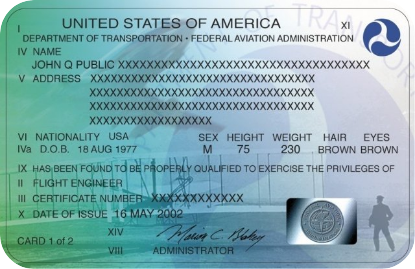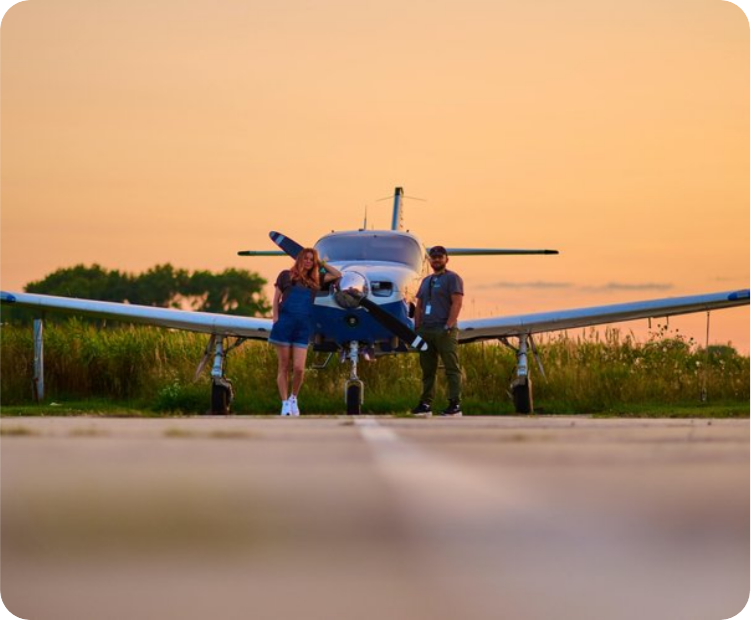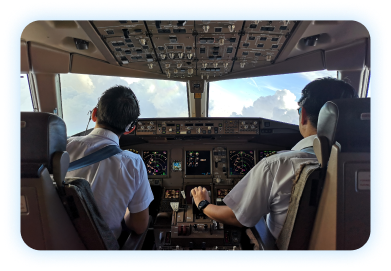A certain exhilaration comes when you are in an airplane and feel the force from the engines pulling you forward. You fall back into your seat and watch as the trees speed up outside the window, growing to a blur. Then suddenly, you feel a slight lean backward and the wheels leave the ground.
You’re in the air!
You’re flying!
The feeling of taking off is always so exciting. Whether it’s the beginning of your vacation, or heading home, taking off in an airplane is always fun.
But one way to make take-offs even more exciting is to be the pilot doing the take-off.
Overview to Get to the Airlines
When it comes to becoming a pilot, there are a few career options that can get you paid to be a pilot. There are fewer where you can share the joy of take-offs and the magic of flight with other people than being an airline pilot.
But to get there it takes some time and dedication. There are multiple certificate requirements before you are going to be allowed to fly an airliner jet. For the sake of brevity, here is a broad overview of what this process would look like.

-
Private Pilot Certificate
-
Instrument Rating Add-On
-
Commercial Rating
-
Certified Flight Instructor (CFI)
-
Multi-Engine Add-On
-
Certified Flight Instructor – Instrument (CFII)
-
Airline Transport Pilot (ATP)
These are the necessary flight certificates to get you to the airline level and become an airline pilot. Most of these are more than just being able to fly, though. You have the written portion of your flight training, which is a written test based on all the ground knowledge you have gained by doing your classroom (or online) training.
After the written test, you will be able to continue your training and move up to do the final checkride and get your certificates!
Pre-Flight Training Necessities
Before you ever even get set up for flight school there are a few important steps to take. Like making sure you are medically cleared to become a pilot.
There’s no reason to even get started on your journey if you won’t be able to advance due to medical reasons.
There are 3 classes of medical certificates and they are all issued by an FAA-approved doctor known as an Aviation Medical Examiner (AME).
-
1st Class Medical – the required medical certificate to become an airline pilot. It has the most stringent requirements that must be met.
-
2nd Class Medical – the medical certificate that is required to exercise the privileges of the commercial certificate and get paid for your work as a pilot.
-
3rd Class Medical – the necessary medical certificate in order to get your private Pilot certificate. It’s most useful if your goal is to just fly for fun or short travel.
Picking a Flight School

This might be the most critical step in your training process: Picking your flight school.
The importance comes from more than just finding the closest airport with a flight school. You also need to take into account the CFI that will be instructing you.
It’s entirely possible for you to stick with the same CFI your entire flight training career. It’s not 100% likely because you might have different needs along the way, but it still can happen.
When picking your flight school, you need to take into account how they do their training. If you are with a primary CFI but fly with someone else occasionally, it could throw you off. You could also cycle through different CFI’s to get a broad perspective of how to fly and develop the best practices for you.
The last factor, or first depending on the level of importance to you, is which style of flight school you would like.
There is a Part 61 and a Part 141 flight school. The names come from the part of the Code of Federal Regulations regarding the training of pilots.
Part 61 flight schools simply follow the standards of Part 61 which outline the necessary abilities a pilot must have to attain their certificate. Following this style of the program allows for dramatic personalization where the instructor can alter what they’re teaching that day to better suit the student.
In turn, Part 141 is a flight school that follows the specific curriculum created by the FAA to train pilots. This standardization calls for a more structured style of schooling. It’s typically set up more like a college where you have classroom learning some days and the actual flying on different days.
Neither is superior to the other, it’s more of a matter of knowing your learning style and which one works better for you.
The same goes for your CFI and flight school. Sometimes you might clash with the personalities of specific instructors or just not feel that you are a good fit at a flight school.
So you should shop around before making a decision. Visit multiple flight schools. Talk to different instructors at the schools. Inspect the airplanes.
Most importantly, take a discovery flight. This will help you determine if you fit well with the instructor and it will give you a hands-on test to see if you even enjoy the actual act of being the pilot in control.
The Private Pilot Experience
When it comes to actually attaining your Private Pilot Certificate, more commonly referred to as the PPL or Private Pilot License, there are really 4 phases of training you do.
For starters, there’s the Pre-Solo flight training. The pre-solo portion can typically be completed in about 10 hours; however, everyone’s Pilot journey is unique to them and I’ve heard of it taking up to 100 (a VERY unique case).
The main goal of the Pre-Solo portion is to teach the student the basics and how to properly take off and land without the assistance of the CFI. When the CFI feels comfortable, they send you on your first solo flight around the pattern. Usually just one or two laps, but you’re the sole manipulator of the controls.
The second part is the Cross Country Flight portion.
There are certain parameters required for your cross-country flights. Two will be with your CFI in the right seat and two (or more) will be solo cross-country flights.
It’s important to remember that the primary reason you are doing these cross-country flights is to learn what it’s like to fly with just a compass, stopwatch (or some other form of a timer), and the sectional chart.
Some schools may allow you to use a GPS on your solo cross-country, but it’s just extremely important for you to know how to fly without relying on the GPS solely.
The third phase is the Checkride Prep stage of flight training. Likely, at this point, you have already done the basic maneuvers. When it comes to the Checkride, you will have to perform the specified maneuvers within the FAA set parameters.
When you’re prepping for the checkride, you will be doing all the maneuvers to perfect them and make you a better pilot. These maneuvers will make you a much SAFER pilot really. That’s the primary goal of all the maneuvers.
During this time, you will likely also get scenario practice. You will be up in the air and the instructor will say something like, “Pretend there is a fire in the cockpit. What do you do?” And you will do the appropriate performance maneuver to respond to that scenario.
The final phase is the actual Checkride itself.
It’s the most nerve-wracking aspect of your flight training because it’s the actual test to see if you are a capable pilot.
It’s broken up into two different parts: The oral portion which is done before you get to the second part, which is the practical flight portion.
The oral portion is testing your ground knowledge. It’s about KNOWING what to do and how to do things. When you get to the practical portion, it’s all about actually performing the maneuvers and applying the ground knowledge to the flight.
Finally, at the end of the day, you’ve done it. You have become an officially licensed pilot. Go celebrate with a $100 (or $200 with inflation) Hamburger!





